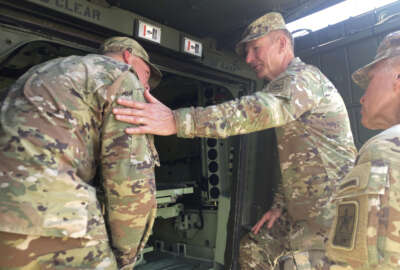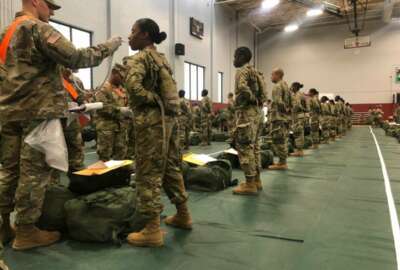
Army looks to popular ’80s slogan to help recruiting
The Army is making changes in strategy and its advertising campaign as it faces multiple recruiting challenges.
After a year where the Army failed to meet its recruiting numbers by a wide gap, it relaunched its brand Tuesday and brought back “Be All You Can Be,” its highly successful slogan from the 1980s. The slogan features in a new ad campaign meant to appeal to Generation Z and their parents.
In an effort to improve recruiting numbers, the Army spent a year developing the new ad campaign, and it has made policy changes designed to cast a wider net for new recruits.
Last year, the Army missed its recruiting goal of 60,000 new soldiers by 15,000 recruits.
“The Army, and frankly, all of the military services are facing the most challenging recruiting landscape in decades. So it is a perfect time to be launching our new brand, launching our reinvented tagline ‘be all you can be.’” said Army Secretary Christine Wormuth at launch event in Washington. And as a child of the 80s, I am super excited that we are bringing back a reinvented version of ‘be all you can be.’”
The new ads feature actor Jonathon Majors walking through historic Army battles talking about the benefits of joining the Army and overcoming obstacles. The Army planned to debut the ad campaign in August, but moved their timeline to March in hopes of affecting recruiting earlier in the year. It also changed its iconic star logo by eliminating the box around it.

The Army names a series of different issues that caused its recruiting shortfalls. Only 23% of the population between ages 17 to 24, that are eligible for recruiting, can actually meet Army entrance standards.
“For shrinking eligibility, right now we have weight, drug use and medical and physical conditions being the largest disqualifiers. And on the ROTC side, only 39% of undergraduate students even meet the requirements to enlist in or to contract in ROTC,” said Raechel Melling, a management analyst at Army Training and Doctrine Command (TRADOC), at a recent Facebook seminar on recruiting.
Some potential recruits also fail to pass the aptitude test required to join the Army, called the Armed Services Vocational Aptitude Battery, or ASVAB. Last fall, Army leadership said post-pandemic only about one-third of applicants passed the ASVAB, down from about two-thirds pre-pandemic.
The Army sought to overcome the problems with entrance requirements by creating the Future Soldier Preparatory Course to help potential recruits pass the fitness and aptitude tests. It started at Fort Jackson, S.C. last year and is expanding to a second program at Fort Benning, GA.
“We stood that up very rapidly. What we’ve seen is those that have come in, we need to focus on the fitness component, they are losing the weight,” said Lt. Gen. Maria Gervais, chief of staff at TRADOC. “And then on the academic side of the house, within the first three weeks, we have 78% of those young men and women improving their test score in at least one category.”
Culturally, the Army points to a widening gap in what it calls “propensity to serve,” which Melling said has been declining since the aftermath of the Sept. 11 attacks, when military recruiting saw an immediate spike.
“Roughly 50% of U.S. adults say that they have a great deal of trust in the military and in the Army. And with less than 1% of adults serving in the military, there’s a lack of familiarity with the military. And all of those things really work together to kind of foster that civilian and military gap that we’re seeing today,” Melling said.
Looking to the future, demographics also impact the Army’s recruiting pool. A declining birth rate will mean fewer possible recruits.
“The birth rate has been declining since about 2007. And with the low birth rate after the 2008 recession, we’re going to see a much smaller high school graduation rate starting in 2030, Melling said.
As the service plans for the Army of 2030, it has to look at the characteristics of those potential soldiers. They are currently in sixth and seventh grade, and they are known as the “alpha generation.”
“They’re in a segmented information environment, you can’t really get your information from one place anymore,” Melling said “There’s many different platforms and medias that these younger generations are interacting on, That’s a neat opportunity for the Army to interact with these younger generations earlier, to kind of help shape their ideas.”
Copyright © 2025 Federal News Network. All rights reserved. This website is not intended for users located within the European Economic Area.
Alexandra Lohr, a former staff member, covered the Defense Department for Federal News Network until September 2023.




